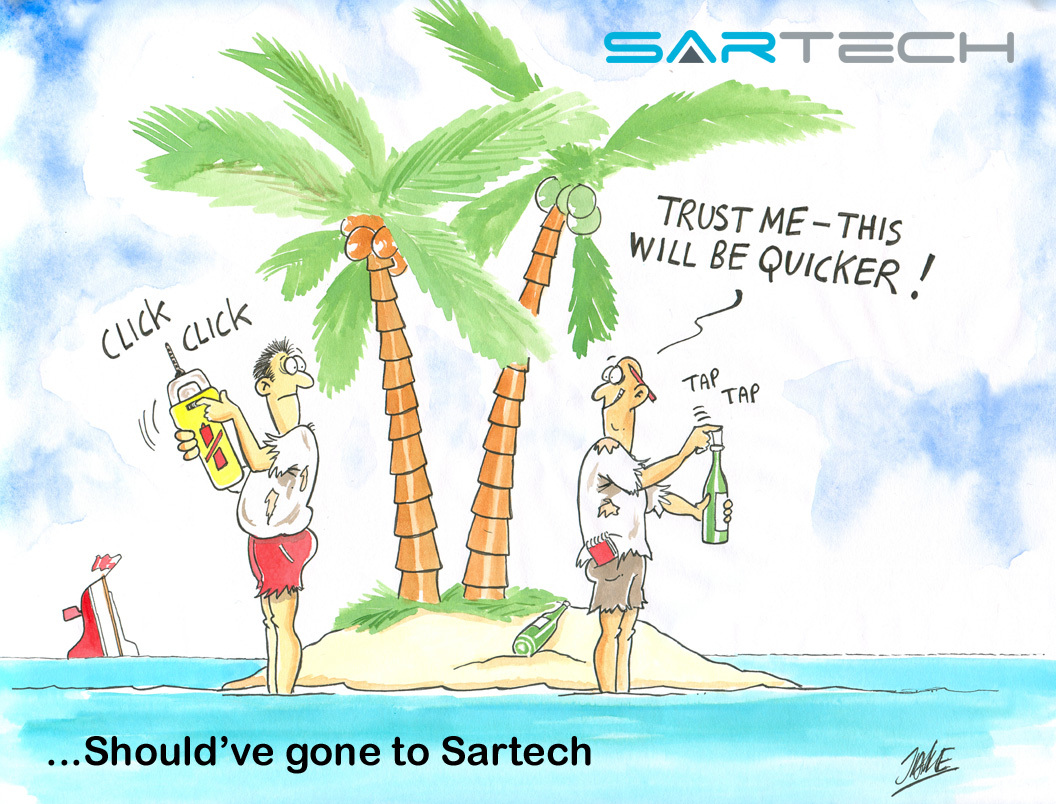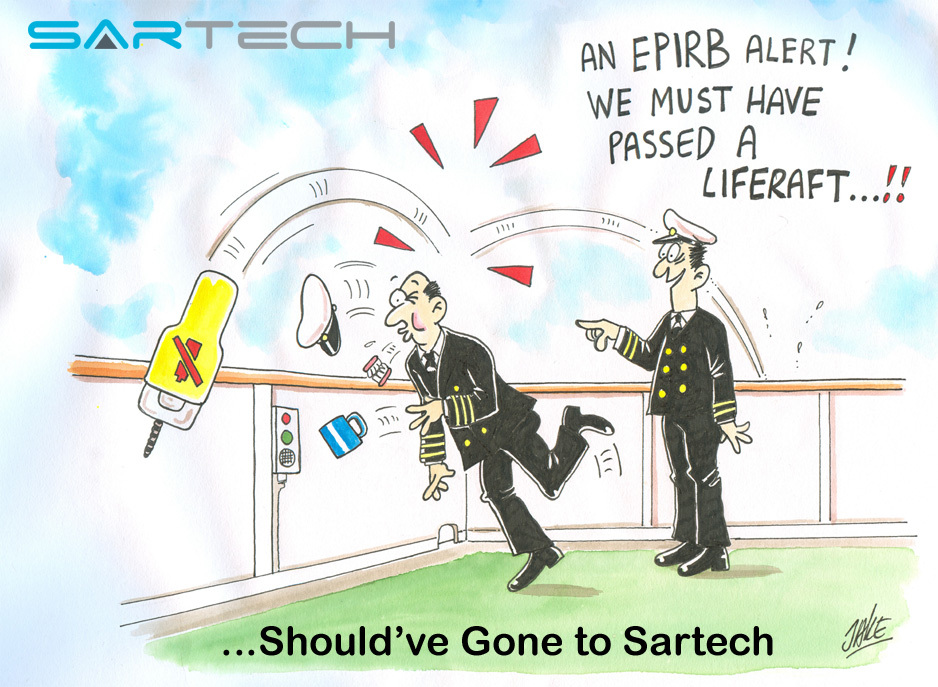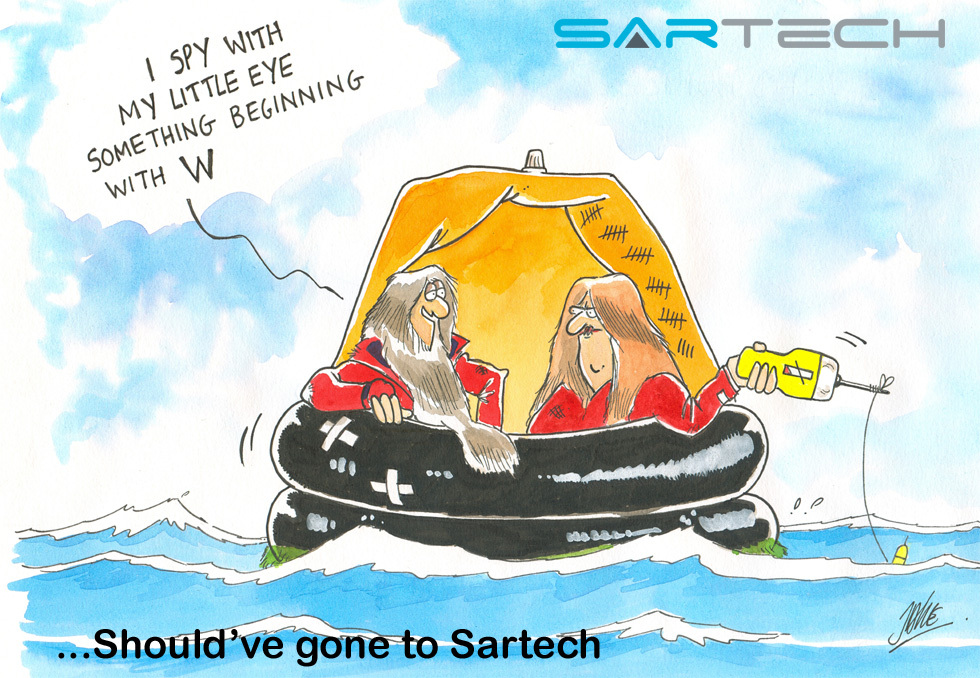EPIRB FAQs
EPIRBS: FREQUENTLY ASKED QUESTIONS
Should I carry an EPIRB on my boat?
How do I choose which EPIRB to buy?
Why should I buy from Sartech?
Is it worth paying extra for a GPS EPIRB?
What is an EPIRB-AIS (or AIS EPIRB) and should I consider this?
Why not buy a cheaper PLB instead of an EPIRB?
Should I buy a SART instead of / as well as an EPIRB?
Can I test my EPIRB to see if it works?
What is an EPIRB?
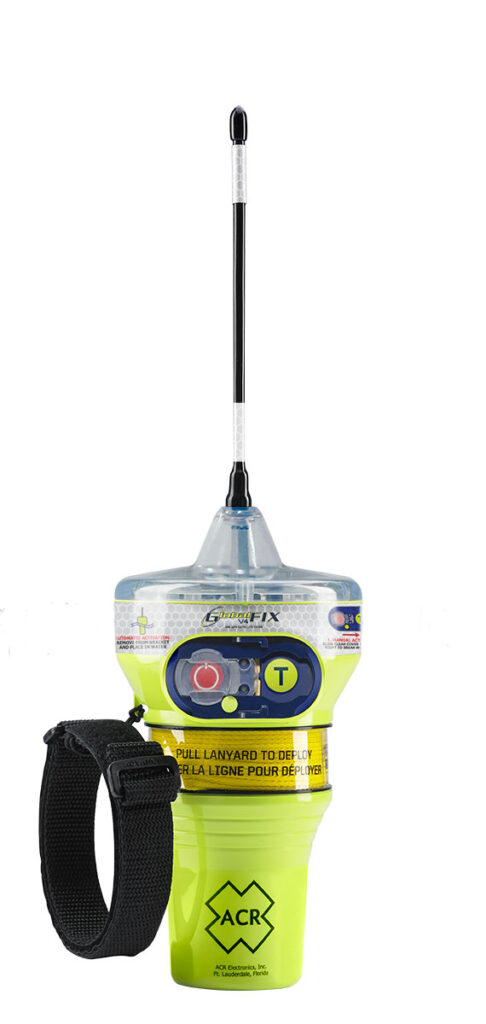
EPIRB stands for Emergency Position Indicating Radio Beacon. This is a battery powered radio transmitter designed to release and float free from a sinking ship and to send an automatic distress signal. Over 500,000 EPIRBs have been installed world-wide, operating in the 406MHz frequency band. These EPIRBs relay their messages to ground stations via the COSPAS-SARSAT satellite network. The distress messages are then passed on the nearest Maritime Rescue Coordination Centre (MRCC) to come to the aid of the survivors. Most EPIRBs also include a flashing strobe light and a second low-power radio transmitter to assist in final location of the survivors by the Search And Rescue (SAR) forces. The COSPAS-SARSAT system also processes signals from aircraft beacons, known as ELTs (Emergency Locator Transmitters) and from Personal Locator Beacons (PLBs).
For more information on how the system works, take a look at the COSPAS-SARSAT website www.cospas-sarsat.org
Should I carry an EPIRB on my boat?
Yes, if you are likely to take your vessel beyond the reliable coverage area of coastal VHF stations. Coverage may extend to 60 nautical miles, depending on the height of the shorebased antennas, but remember that if your vessel does not have a high antenna, or if you rely on a hand-held VHF, the range may be less than 10 nautical miles. Marine band VHF does not work ‘over the horizon’ except in unusual weather conditions, so however much power you transmit, the range will be limited by the curvature of the earth. Even close in to cliffs your VHF signal may not get through to the Coast Guard.
If there is another vessel within range, you may be able to alert them via VHF Channel 16 or using the “red button” DSC Distress Button if they are listening!
However, a yacht which is dismasted, and any vessel which loses its main power source due to an electrical fault, fire, or flooding, will probably have to resort to hand-held VHF (if the battery is charged!), or have no means for communication with shore stations.
Do not rely on mobile phones to save you if caught in trouble offshore. GSM range is less than 10 nm, and can be quite patchy even inshore, as coverage is aimed at population centres.
406 MHz EPIRBs allow all mariners to take advantage of the system that has already saved more than 50,000 lives. An EPIRB has its own power supply and antenna, and does not rely on any other system on your boat. Just switch it on, and within minutes the rescue authorities will know that you are in trouble. Typically within an hour, (or just a few minutes if you have a GPS EPIRB) your position will be known, and the SAR forces will be on their way. When they get close they will home in to the built-in 121.5 MHz homing transmitter, and start looking out for the flashing strobe light. Once you have bought your EPIRB, there is nothing more to pay until the battery needs changing after about 5 years. The satellite system and rescue organisation are supplied free of charge!
If you think EPIRBs are just for offshore sailors, read this Catamaran Capsize in the Solent
Manual or auto-release?

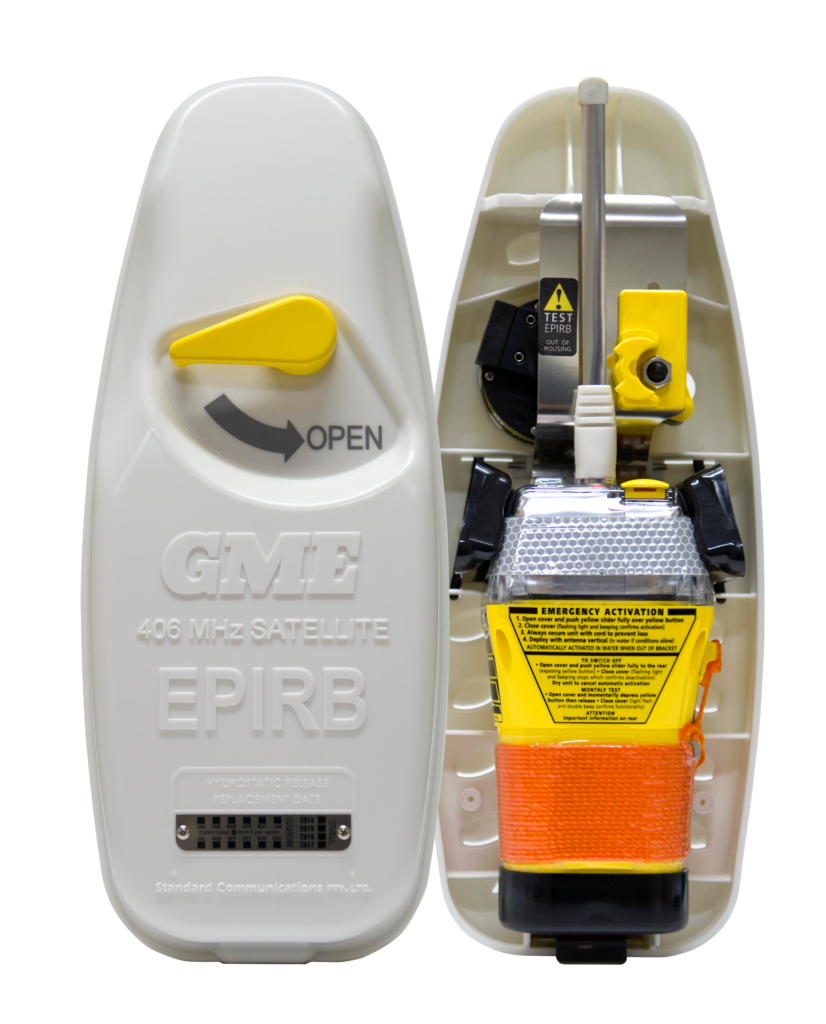
Commercial vessels carry automatic release EPIRBs, designed to float free and activate automatically if the vessel sinks. The EPIRB may also be removed and activated manually, where there is time to do this. The same technology is now available for leisure vessels, giving confidence that a vessel which goes down for whatever reason will trigger an alert to the SAR authorities, giving identity and location. Large, fast power vessels should certainly consider this option, as they can sink very quickly if involved in a collision with another vessel, or a submerged object. However smaller vessels with large amounts of reserve buoyancy are more likely to stay afloat for a significant amount of time even if holed or capsized, so a manual release EPIRB on a bulkhead bracket or in a grab bag would be an acceptable, cheaper alternative. In some cases, e.g. catamarans, a manual release EPIRB stowed in an area accessible when the vessel is inverted would be the best solution.
How about 121.5/243 MHz EPIRBs?
Do not waste your money on these EPIRBs. You may find one on eBay for a few pounds, and this is because they are obsolete technology – useful for homing purposes only. Satellite processing of 121.5MHz signals was switched off in 2009, due to massive problems with untraceable false alerts.
How do I choose which EPIRB to buy?
Take a look at our Buyer’s Guide “Which Emergency Beacon“
The following points should be borne in mind before getting down to price and delivery:
Approvals
All 406MHz beacons must be type approved by COSPAS-SARSAT in order to ensure compatibility with the satellite system. This sets a minimum standard which means that the signal from any of these beacons should be processed by the system and produce the necessary alert.
Environmental and operational requirements – for instance how the switches should work, drop test resistance, waterproofing – are set by national standards. For EPIRBs, these are overwhelmingly based on the performance requirements set by the International Maritime Organisation (IMO) for the Global Maritime Distress and Safety System (GMDSS). Specifications to look for include:
IEC 61097-2 (International Standard)
RTCM Recommended Standards (USA standard used as the basis for FCC approval)
ETS 300 066 (European Harmonised Standard)
There are only minor differences between these standards, and the top EPIRBs are approved to all of them. There are also Canadian, Japanese and Australian/NZ variants. However, especially when buying mail order or via the internet, make sure that your chosen EPIRB is approved by the authorities where your vessel is registered.
In Europe you will be OK if you buy an EPIRB with “wheelmark” approval, showing that it is approved in accordance with the Marine Equipment Directive.
Look for this mark:
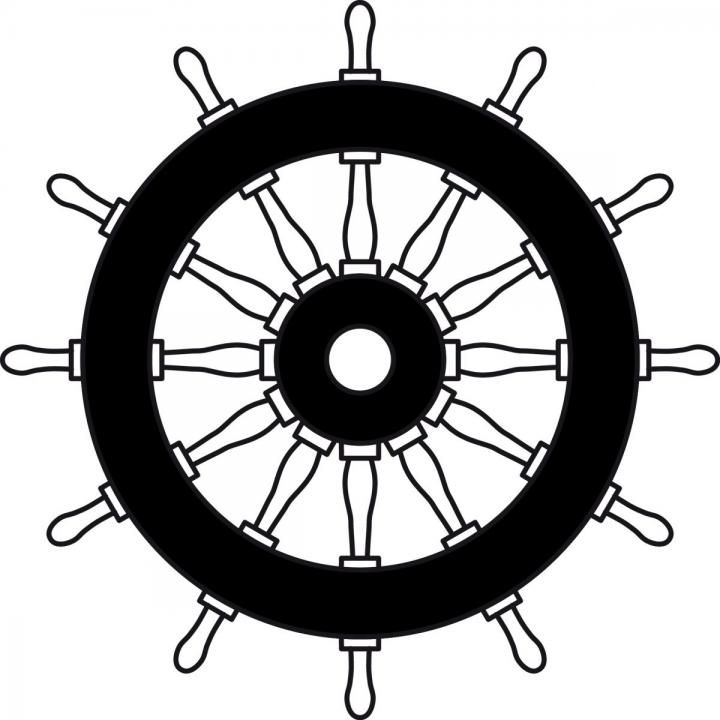
In the USA, EPIRBs must be approved by the Federal Communications Commission (FCC). Look for the “FCC ID” to check this.

Temperature range
COSPAS-SARSAT standards require a minimum of 24 hours operating time at the minimum temperature (the toughest condition). Most national standards follow the IMO performance requirements that require 48 hours. There are two temperature classes:
Class 1 beacons are approved for operation between -40degC and +55degC
Class 2 beacons are approved for operation between -20degC and +55degC
Unless you go into arctic areas, there’s no point in paying any extra for Class 1 performance.
Release and activation
There are two basic types, approved as different categories:
Category I EPIRBs are designed to be released and activated automatically should the vessel sink. All current models use a hydrostatic release unit (HRU) triggered by water pressure at a depth of 2-4 metres. The HRU is a disposable device with a service life of 2 years. A Category I EPIRB is supplied with some kind of bracket or container which must be bolted to the outside of the vessel on a rail, deck or bulkhead. It can also be released and activated manually.
Category II EPIRBs are designed for manual activation only. They may be supplied in a mounting bracket, or kept in a grab bag or liferaft.
Note that most current Category I and Catgory II EPIRBs incorporate seawater switches to ensure that if thrown into the water they will start transmitting, irrespective of the setting of the switches. This type of EPIRB must be kept in the bracket supplied, otherwise it will set off an alert if it gets wet.
Owners of smaller vessels, especially yachts, may consider a Category II EPIRB more appropriate for their use. These vessels tend to have a large reserve of buoyancy, so that they take a long time to sink, even if holed. In fact many people have died after abandoning yachts that subsequently have been shown to stay afloat longer than the liferaft. On small craft, it is also possible to mount the EPIRB in a position where it can be easily reached in an emergency.
Cost of ownership
Bear in mind that, in addition to HRU replacement for Category I EPIRBs, all EPIRBs have a limited battery life. After 5 or 6 years, depending on model, the EPIRB will need to be sent to a service depot to have a new battery fitted and be fully tested. Some EPIRBs now offer a 10 year service life, but with only a 5 year warranty,, and we would still recommend professional testing at least every 5 years. Checking out the cost and availability of service facilities in your area might be a good idea before making your decision, bearing in mind that transport regulations may make international options impractical. Warranty period varies from 2 years (McMurdo) to 6 years (GME).
Why should I buy from Sartech?
We are the specialists, so we can advise you on the right equipment for your needs and provide you with continued support for all the time you own it. We will make sure your EPIRB is correctly programmed, and we work closely with the UK Coast Guard to help make sure new beacons are registered with the UK Distress and Security Beacon Database.
We carry out ISO9001 manufacturer approved servicing in-house and manufacture our own battery packs, as well as keeping a good stock of approved spares. So, most servicing and repairs can be turned round in days, not weeks.
Sartech aims to offer the best prices by selling direct, but you may find cut-price deals elsewhere. Call us first before being tempted by such special offers. You could end up with a lower specification or obsolete product. Or perhaps “old stock” with a reduced battery life.
Is it worth paying extra for a GPS EPIRB?
The quick answer is YES! In fact the extra cost is now minimal. Some EPIRB manufacturers no longer produce non-GPS beacons. They are already banned for sale in the USA.
406MHz beacons can now be detected by a number of different satellite systems, to provide very high reliability and near instantaneous alerting. Some of these systems are capable of estimating the beacon location without needing a GPS fix transmitted by the beacon, but the inherent delay and loss of precision could make a crucial difference to your chances of being rescued in time.
Sartech follows guidance from the Maritime & Coastguard Agency (MCA) and no longer offers non-GPS beacons, and strongly advocates upgrading older beacons when they are due for service.
What is an EPIRB-AIS (or AIS EPIRB), and should I consider this?
These devices offer all the normal features of a GPS EPIRB, but also incorporate AIS SART transmissions to facilitate local rescue by any vessel equipped with an AIS transponder or receiver. These devices are quite new, and are currently quite expensive – although probably cheaper than buying both a GPS EPIRB and an AIS SART. Prices will probably come down as more models come onto the market. From 2022, all new EPIRB installations on SOLAS vessels will need to incorporate AIS location.
Why not buy a cheaper PLB instead of an EPIRB?
An EPIRB is designed as a ship’s beacon. It will be supplied with either a manual release bulkhead bracket, or an auto-release container for mounting above decks. It is designed to operate whilst floating free, so if you end up in the water, or in a life raft, you just float it in the sea and tie it on with the tether to make sure it doesn’t float away. A PLB, on the other hand, is designed to be stowed in a grab bag, or carried by a crew member. To activate it, the antenna must be erected and the unit switched on. It must then be held with the antenna vertical, but away from objects such as a human body which might shield the signal. In the water, or in a life raft, you will have to find a way to support the beacon in this way until rescue comes. Floating it in the sea will not be effective. Some models are not even buoyant, so if you don’t tie it on, you risk losing it to Davy Jones. In general, EPIRBs operate for a minimum of 48 hours at -20degC (more at higher temperatures), whereas PLBs are only guaranteed to operate for 24 hours. All EPIRBs have some form of flashing strobe light to aid final location. Some PLBs have this facility as well, although you may have to press a button to activate this function as some models do not have the battery capacity to flash the light continuously.
The big advantage of a PLB carried on the person is that it is also available in a man overboard situation, or in a panic abandonment (e.g. fire down below). A PLB on the belt of a lifejacket worn by a single hander, or sole watchkeeper would seem to be an excellent idea, ideally in addition to the ship’s EPIRB. However if the budget only stretches to one beacon, then in this situation a PLB is probably the better option – after all it is more important to save the crew than the boat! A further justification for owning a PLB is that it can be registered to the individual, and used when crewing on other boats, or for flying, trekking, and other outdoor activities where emergency assistance might be needed.
Should I buy a SART instead of / as well as an EPIRB?
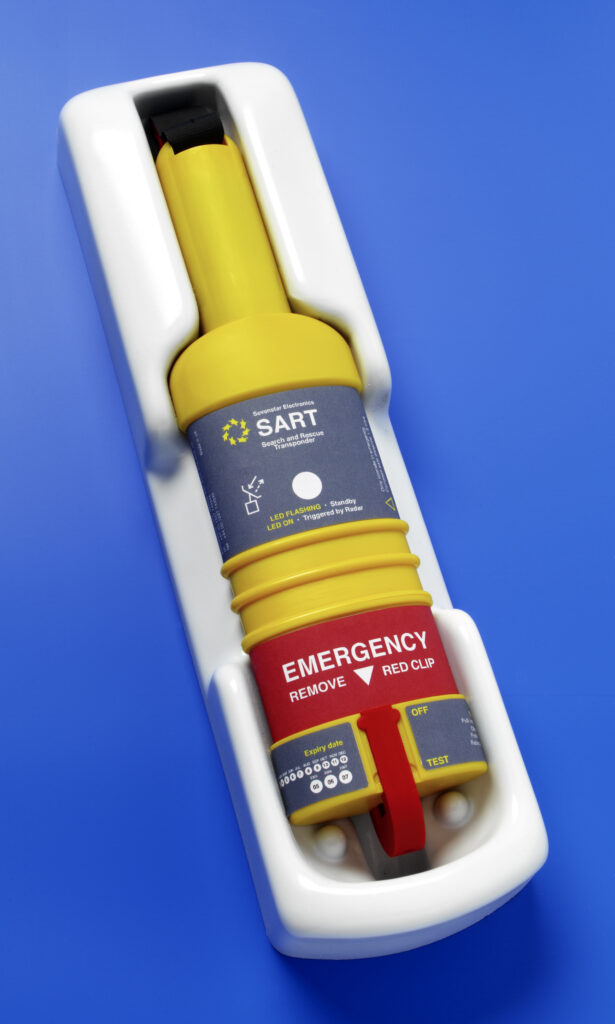
A SART is not an alternative to an EPIRB. It is not designed to raise an alert, but allows any vessel carrying a normal marine radar (X-band) to come to your aid even in very poor visibility. Once activated, the SART causes a series of dots to appear on the radar screen of any vessel within a range of about 5 nautical miles. These dots are quite distinctive, and stand out from the normal radar responses – giving the search vessel both the bearing and range to the SART.
The SART is an ideal complement to the ship-to-shore alerting devices such as EPIRBs, INMARSAT-C, and DSC radio. These devices tell the SAR forces who you are and give your approximate position – but this is of no help to you if you are in an area where there are no dedicated SAR resources. For instance, if you are off the coast of East Africa, or in the middle of the ocean, your best hope for a rapid rescue may be a merchant vessel, cruise liner, or even a fishing boat. Nearby vessels can be informed of your problem and your whereabouts, but they will not have the means to home in your EPIRB. In poor weather conditions, it can be very difficult to locate a liferaft with a visual search, even if you can come to within a couple of hundred metres by using an accurate GPS fix. The SART gives any radar equipped vessel the means to detect and locate survivors.
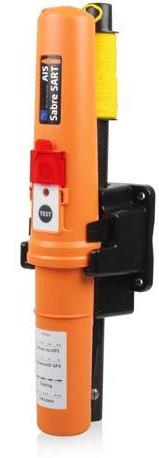
The traditional radar SART is gradually being replaced by the AIS SART. Again, this is designed to assist in final location by ships in the area, but uses AIS rather than radar.
Note that EPIRBs incorporating the AIS SART function are starting to come onto the market, and this may become standard in future.
If you never stray beyond ‘home’ waters, well served by Coast Guard, Lifeboats etc., then you don’t really need a SART. Those going further afield should certainly consider carrying one.
Can I test my EPIRB to see if it works?
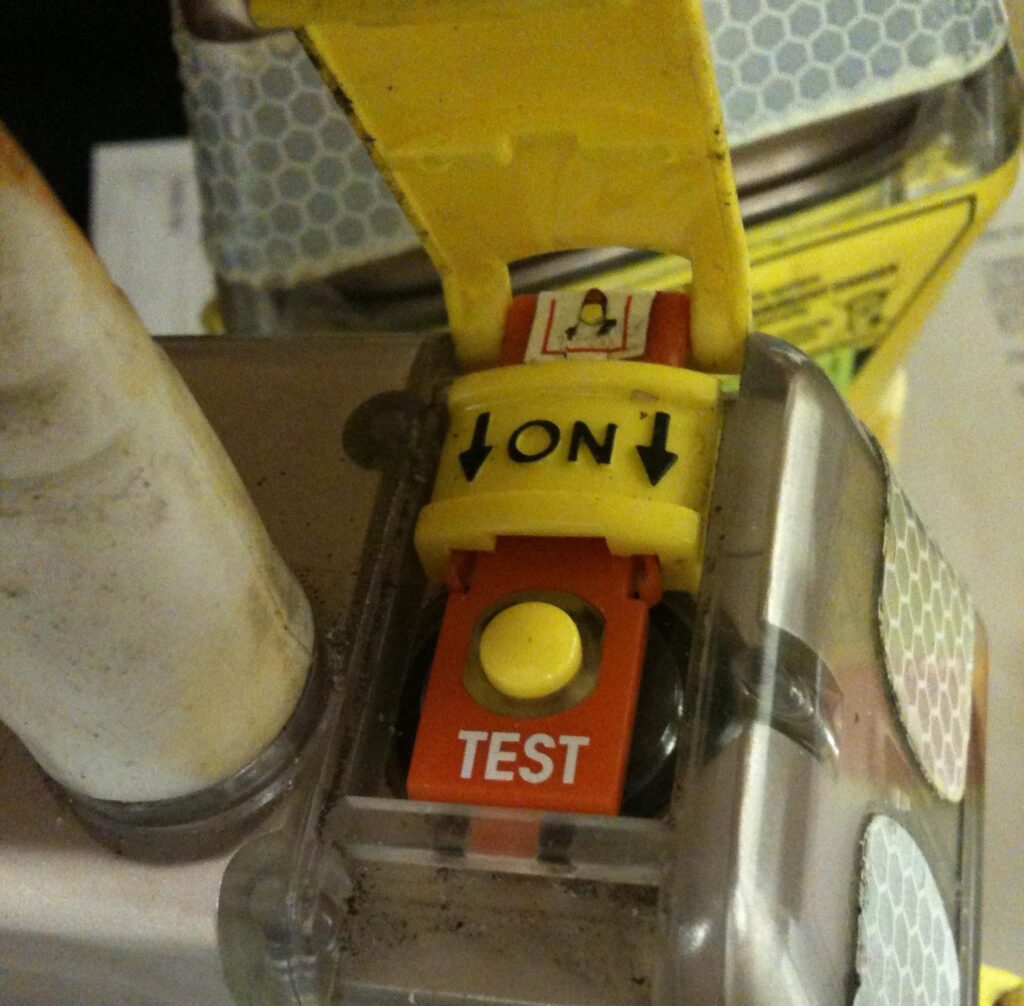
All 406MHz EPIRBs are provided with a SELF-TEST facility (usually a separate button or spring-return switch position marked “TEST”). Check your operator’s manual for the recommended procedure. Generally testing once a month will have no adverse effect on battery capacity. Do not repeatedly press the button, even if the test fails, as this uses up satellite capacity needed for genuine alerts.
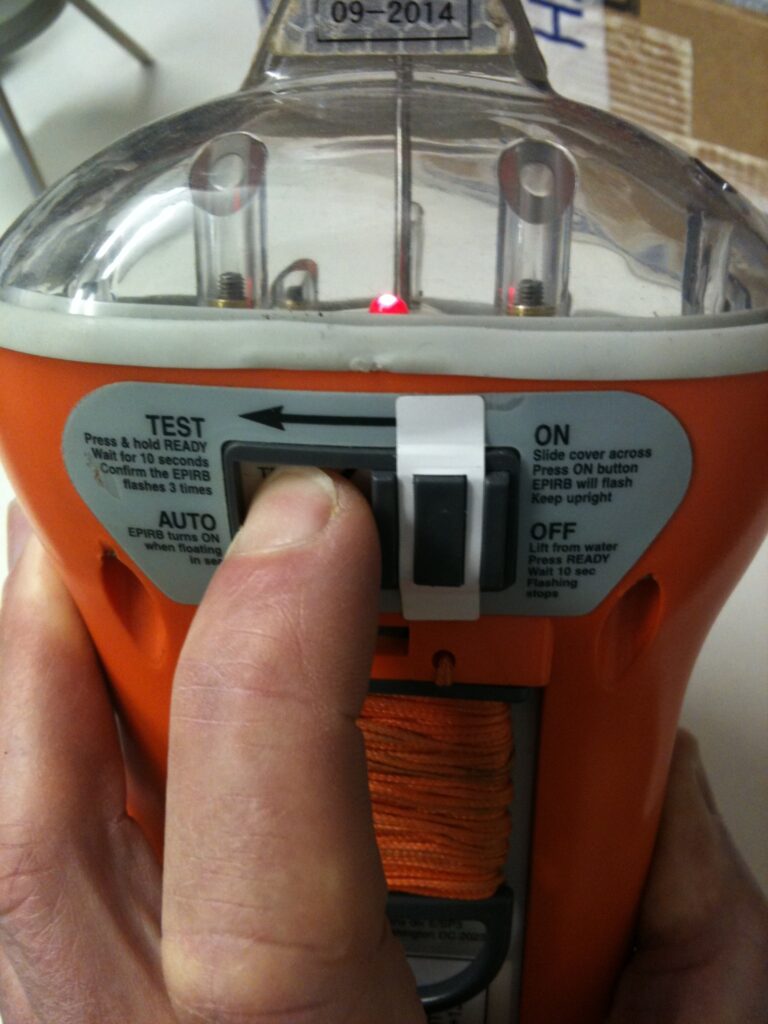
EPIRBs must never be activated in “live” mode. Deliberately causing false alerts can result in financial penalties and confiscation of equipment. Take great care when handling the EPIRB – especially if taken out of its mounting bracket. Even handling with wet hands in this condition could activate the EPIRB. If you suspect that you might have accidentally switched on the EPIRB, even for one minute, you should immediately contact your local coast guard and let them know. This will make sure you don’t get into trouble. Let the coast guard have the 15-digit HEX ID that should be marked on the EPIRB label.
For full confidence in your EPIRB, take it to a service centre to have it properly tested. A properly equipped service centre will have a test receiver capable of providing a printout of the EPIRB message. This is a far better test than the EPIRB can perform internally. Vital equipment such as EPIRBs should be properly serviced at the battery change interval by an approved service centre.
